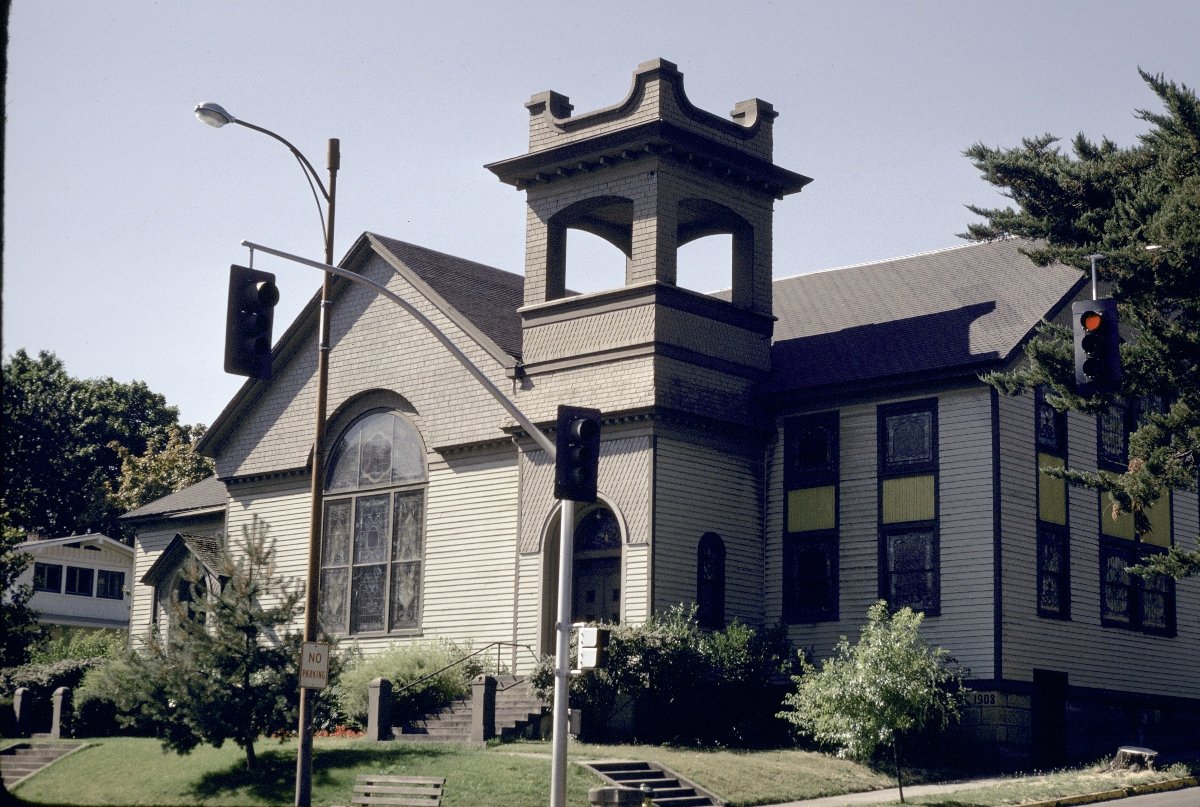#5378. American Church with Asymmetrical Facade and Distinctive Bell Tower
Before us stands an excellent example of American church architecture from the late 19th to early 20th century. The building demonstrates elements of Neo-Gothic and Neo-Romanesque styles, harmoniously combined in a unified composition. The facade is predominantly executed in light tones using horizontal siding, which is characteristic of American religious buildings from this period.
Particular attention is drawn to the asymmetrical composition of the facade with an expressive bell tower on the right side. The tower features a distinctive crown with decorative elements resembling crenellations. The arched openings of the tower effectively contrast with its rectangular forms, creating a rhythmic interplay of architectural elements.
The left side of the facade is marked by a large semi-circular window with an arched top, typical for church architecture and providing good natural lighting to the interior space. The main entrance is designed as an arched portal, emphasizing the sacred function of the building.
The facade is enriched with subtle decorative details, including cornices, window and door framings. The combination of brickwork in the upper part of the tower with wooden cladding of the main volume creates an interesting textural play and highlights the architectural hierarchy of elements.
The building is organically integrated into the surrounding landscape with greenery, which enhances its visual perception as a place of seclusion and spiritual tranquility.
